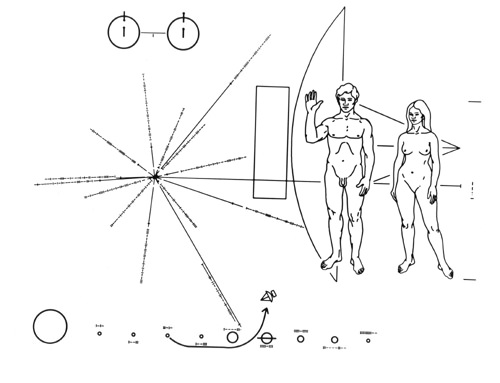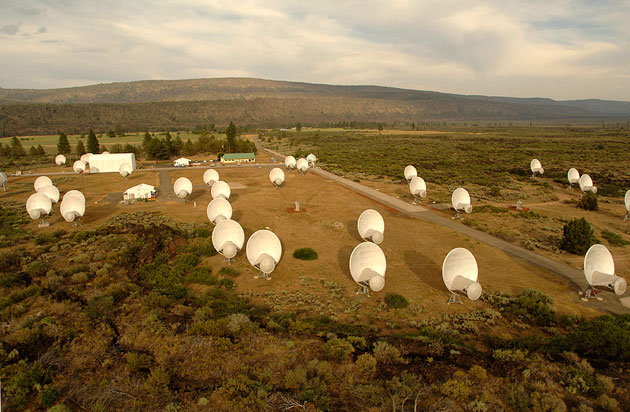[/caption]So, you have a radio transmitter and you’ve been tasked to send a message into space to try to communicate with a hypothetical alien civilization. Where do you begin? Probably high on your list is to seek out the best candidate stars to send a signal to. As we only have experience of life on Earth, it’s a pretty good idea to look for Sun-like stars, as for all you know, that is the only place where Life As We Know It™ could exist.
So now you have found the potential location of an alien civilization, what message should you send? Firstly you’d probably want to make a good impression; perhaps sending directions to Earth, a universal map with an arrow pointing at the Solar System. Secondly you might want to identify what/who you are (insert some human physiology here). And third? Perhaps you’d consider sending information about our culture, civilization, history, science; all the good stuff that makes us human.
Would it cross your mind to mention there are 23 bloody conflicts going on right now amongst our own kind? Would you think about telling our potential alien neighbours about what you just had for dinner? Would it be a good idea to tell them about the political corruption in your country, the vast poverty worldwide or the ecological damage we are doing to our own home?
In a recent article written by the director of interstellar message composition at the SETI Institute, the question about communicating honestly with ET, without sanitizing the truth, is asked. Should we really tell an alien civilization about our problems?

OK, so let’s turn this around. Perhaps we’ll have more luck if we start transmitting radio signals to Sun-like stars in the hope of an alien race as advanced as ourselves receiving it. This program is known as Messaging Extraterrestrial Intelligence (METI) or “Active-SETI.” But what do we say? One of the earliest messaging attempts was the plaque bolted to the side of the Pioneer spacecraft (pictured top), even though the naked human figures representing male and female caused a stir (some groups considered the naked human form interstellar pornography). Despite a few disputes about what we should be sending into space, generally the messages have been very positive, trying to portray the human race in a very positive light.
Douglas Vakoch, from the SETI Institute in Mountain View, California, disagrees with the policy of sending only positive messages into space via radio transmissions or metal plaques strapped to the sides of spaceships.
“An acknowledgment of our flaws and frailties seems a more honest approach than sending a sanitised, one-sided story,” Vakoch said in a recent New Scientist column. “Honesty is a good starting point for a conversation that could last for generations.”
As the director of interstellar message composition, Vakoch obviously knows a thing or two about sending messages to our potential alien neighbours. However, the question as to whether or not we should sanitize our communications seems a little strange. Of course we should transmit the best mankind has to offer! I don’t believe sending messages of culture, science, mathematics, art and music would be setting us up for a fall. If we are indeed the new kids on the block of extraterrestrial civilizations, I think we’d need to make a great impression (depending on whether ET understands what we are trying to communicate in the first place).

Unfortunately, that goes against human nature. What’s the first thing you do when moving into a new neighbourhood? You might throw a house-warming party, as a way to introduce yourself to the new neighbours. You probably wouldn’t tell your neighbours about your family/money/alcohol/drug/criminal problems at the party. If you did, you might find the room emptying very quickly. It’s not that you are being dishonest, you’re trying to gain their first-impression trust and interest. This principal holds true for companies trying to sell a product (I have yet to have a doorstep sales person telling me his encyclopaedia collection is actually useless when the world has Wikipedia) and to countries forming new diplomatic ties. We know there’s more to the story than just first impressions, but first impressions are the bonds that help develop the relationship in the future.

We can’t second-guess how an extraterrestrial civilization is going to respond to us, there is no precedent of alien communications, so perhaps we should take the “sanitized” approach. Positive information is probably enough information; too much information could turn us into interstellar outcasts before we’ve even had a chance to receive a message from another star. (I thought it was a little too quiet out there, perhaps they received our commercial TV signals.)
And if the advanced alien race deems us “not worthy” on account of the mixed signals we are sending out, they might turn hostile sooner rather than later…











